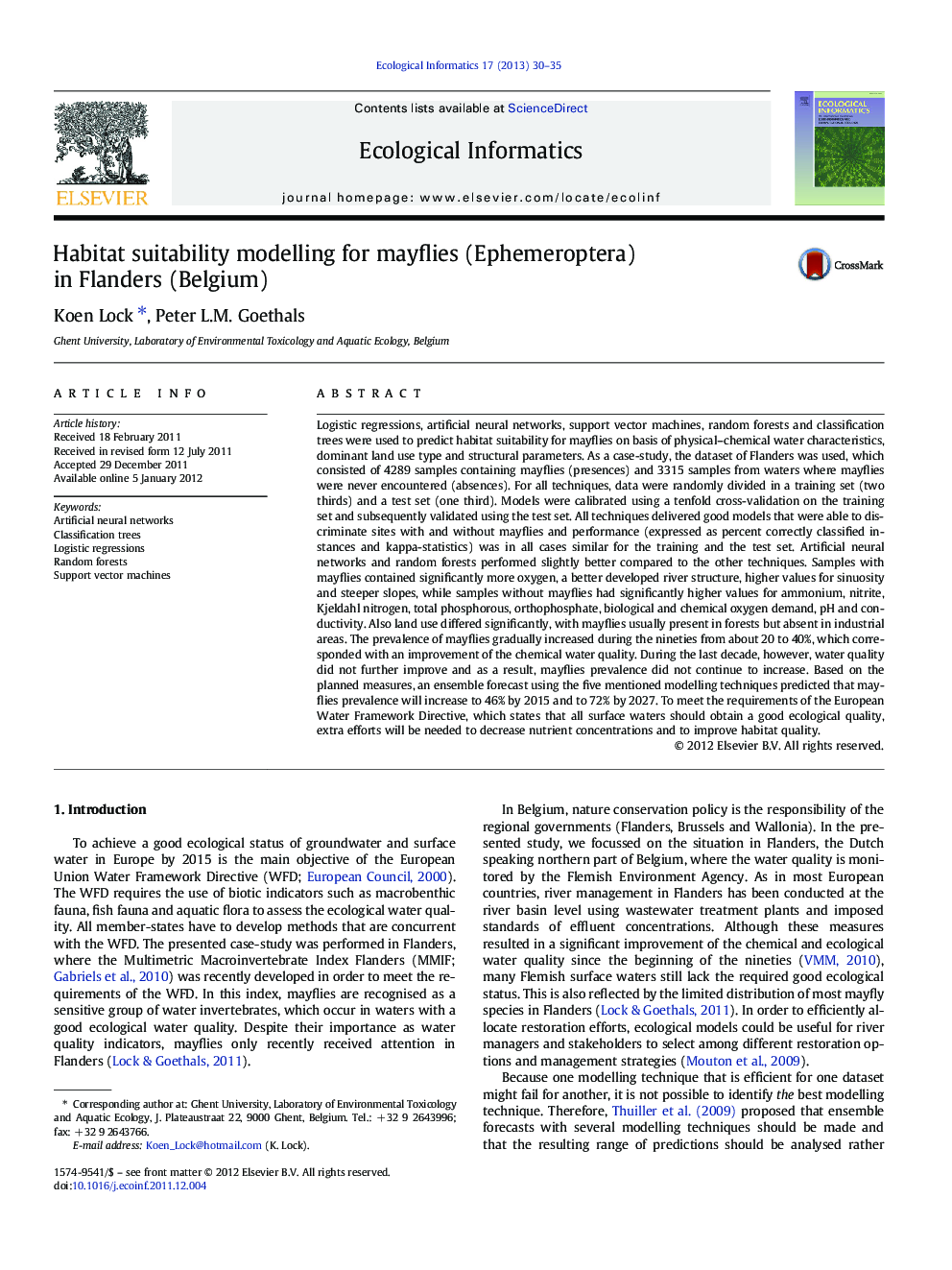| کد مقاله | کد نشریه | سال انتشار | مقاله انگلیسی | نسخه تمام متن |
|---|---|---|---|---|
| 4374961 | 1617215 | 2013 | 6 صفحه PDF | دانلود رایگان |

Logistic regressions, artificial neural networks, support vector machines, random forests and classification trees were used to predict habitat suitability for mayflies on basis of physical–chemical water characteristics, dominant land use type and structural parameters. As a case-study, the dataset of Flanders was used, which consisted of 4289 samples containing mayflies (presences) and 3315 samples from waters where mayflies were never encountered (absences). For all techniques, data were randomly divided in a training set (two thirds) and a test set (one third). Models were calibrated using a tenfold cross-validation on the training set and subsequently validated using the test set. All techniques delivered good models that were able to discriminate sites with and without mayflies and performance (expressed as percent correctly classified instances and kappa-statistics) was in all cases similar for the training and the test set. Artificial neural networks and random forests performed slightly better compared to the other techniques. Samples with mayflies contained significantly more oxygen, a better developed river structure, higher values for sinuosity and steeper slopes, while samples without mayflies had significantly higher values for ammonium, nitrite, Kjeldahl nitrogen, total phosphorous, orthophosphate, biological and chemical oxygen demand, pH and conductivity. Also land use differed significantly, with mayflies usually present in forests but absent in industrial areas. The prevalence of mayflies gradually increased during the nineties from about 20 to 40%, which corresponded with an improvement of the chemical water quality. During the last decade, however, water quality did not further improve and as a result, mayflies prevalence did not continue to increase. Based on the planned measures, an ensemble forecast using the five mentioned modelling techniques predicted that mayflies prevalence will increase to 46% by 2015 and to 72% by 2027. To meet the requirements of the European Water Framework Directive, which states that all surface waters should obtain a good ecological quality, extra efforts will be needed to decrease nutrient concentrations and to improve habitat quality.
Journal: Ecological Informatics - Volume 17, September 2013, Pages 30–35